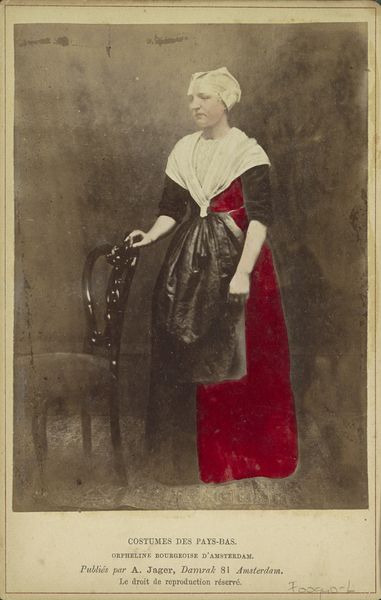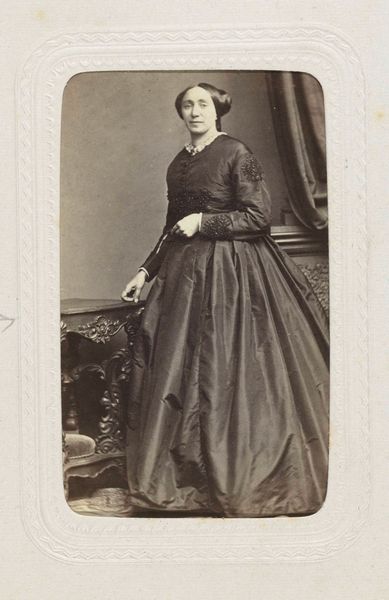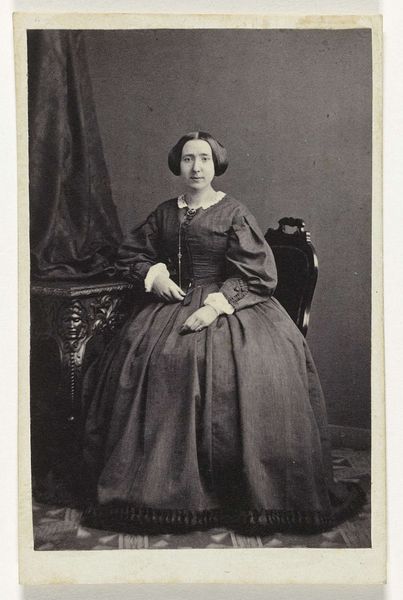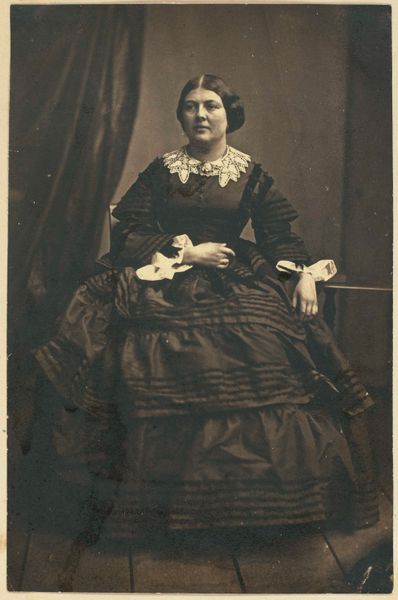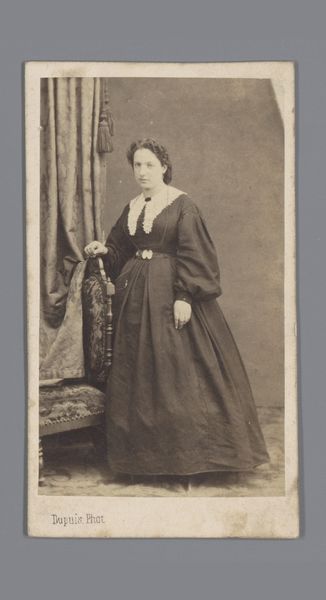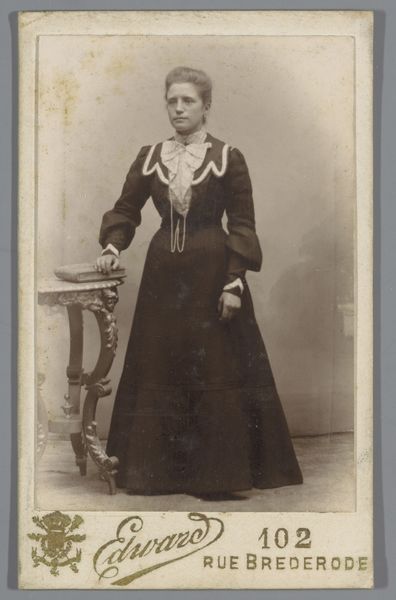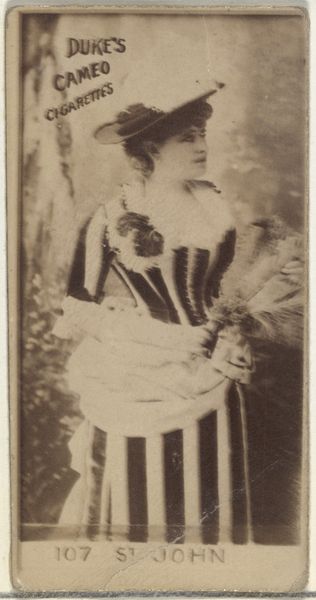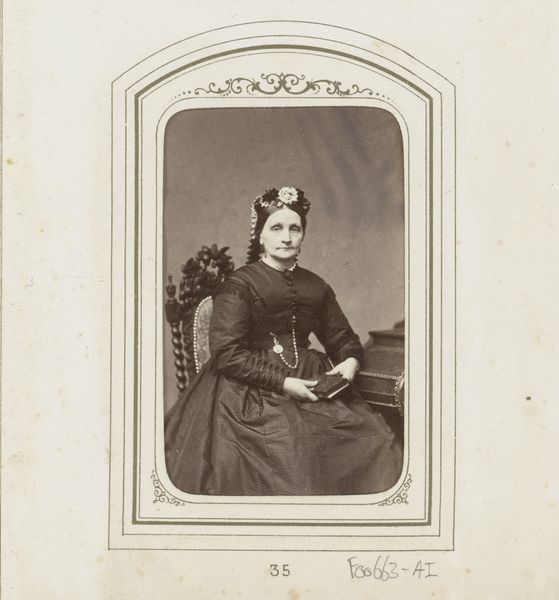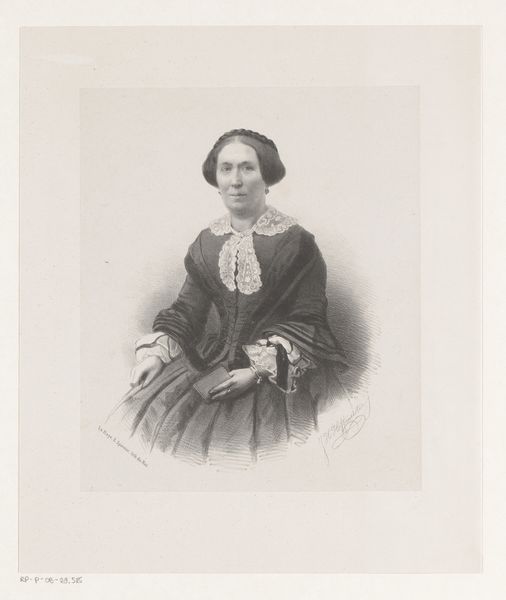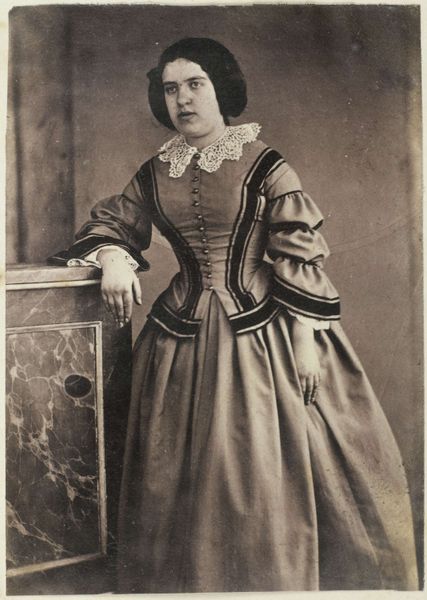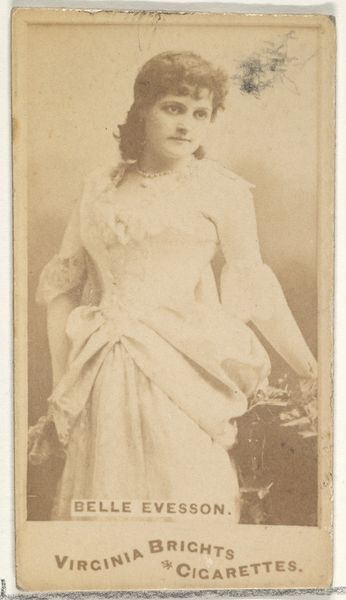![[The Countess Canning, Simla] by Jean Baptiste Oscar Mallitte](/_next/image?url=https%3A%2F%2Fd2w8kbdekdi1gv.cloudfront.net%2FeyJidWNrZXQiOiAiYXJ0ZXJhLWltYWdlcy1idWNrZXQiLCAia2V5IjogImFydHdvcmtzLzRlODU3NTk1LTM3MTUtNDdiMS05MTZhLWNlYjI5NzRjODJkNC80ZTg1NzU5NS0zNzE1LTQ3YjEtOTE2YS1jZWIyOTc0YzgyZDRfZnVsbC5qcGciLCAiZWRpdHMiOiB7InJlc2l6ZSI6IHsid2lkdGgiOiAxOTIwLCAiaGVpZ2h0IjogMTkyMCwgImZpdCI6ICJpbnNpZGUifX19&w=3840&q=75)
daguerreotype, photography
#
portrait
#
daguerreotype
#
photography
Dimensions: Mount: 33 x 26.1 cm (13 x 10 1/4 in.) Image: 20.7 x 14.1 cm (8 1/8 x 5 9/16 in.)
Copyright: Public Domain
Editor: This is "The Countess Canning, Simla", a daguerreotype from 1861 by Jean Baptiste Oscar Mallitte. The portrait has such a subdued, almost melancholy, feel to it, due in part to the limited tonal range of the image, and the Countess's slightly mournful expression. How do you read this work? Curator: I would immediately draw attention to the arrangement of forms within the image. Observe the subject's placement, slightly off-center, balanced by the wicker table to her right. Notice the careful juxtaposition of textures - the smoothness of her gown, contrasted against the intricate weave of the table and the delicate ruffles of her blouse. Editor: I see what you mean. There's also a really strong emphasis on vertical lines – her posture, the folds of her dress, even the bars of the wicker table all draw your eye upwards. Does that verticality suggest something to you? Curator: Indeed. This verticality, counterpointed by the curves of her hat and the table's design, creates a dynamic tension within the otherwise still image. Consider also the tonality. The limited palette emphasizes the gradations of light and shadow, adding to the somber mood you mentioned. Editor: So you're saying that it's not necessarily about who she *is* but more about how the photograph *works* visually? Curator: Precisely. The image’s power lies in its formal construction, its arrangement of lines, forms, and textures to create a compelling aesthetic experience. The way the light falls across the subject, the precise angles – it all contributes to a very particular visual language. What compositional decisions stand out for you now? Editor: The balance between the subject and the table makes much more sense now. I see how they’re counterweights that add to a visual harmony! It gives me much more to think about with portraiture generally! Curator: Agreed. It showcases how understanding an artwork's formal elements provides powerful ways of analysis and, hopefully, greater appreciation.
Comments
No comments
Be the first to comment and join the conversation on the ultimate creative platform.

